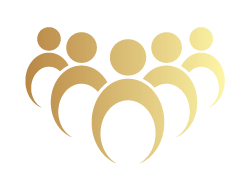Maintaining DEI Momentum: Best Practices for Businesses Post-Supreme Court
July 28, 2023
The US Supreme Court has recently ruled that race can no longer be considered as a factor in university admissions. The landmark ruling upends decades-old US policies on so-called affirmative action, also known as positive discrimination. The ruling means that admissions programs like those at the two universities at the center of the case, Harvard University and the University of North Carolina, are no longer permitted. While the decision will impact admissions policies that have historically benefited Black and Latino students, the ruling still allows colleges and universities to consider an applicant’s discussion of how race has affected their life as long as it is “concretely tied” to a “quality of character or unique ability” that the applicant can bring to the school.
It’s important to note that the Supreme Court’s decision on affirmative action has no legal effect on workplace law. Hiring and firing decisions cannot be impacted by protected traits, period. However, experts who work and study workplace diversity, equity, and inclusion (DEI) efforts are worried about what the court’s decision on affirmative action will mean for these initiatives as conservative groups take their fight against diversity efforts even further.
Legal experts note that the Supreme Court’s decision only impacted affirmative action in higher-education admissions, not affirmative action in private workplaces. The court held that affirmative action violates the Equal Protection Clause in the US Constitution (and, by extension, Title VI of the Civil Rights Act of 1964), but did not hold that affirmative action violates Title VII of the Civil Rights Act of 1964—the main statute governing the employment relationship.
So, don’t shrink back from doing the good work your organization is doing! Most DEI workplace initiatives are not affirmative action in the sense addressed in the decision—because they do not involve employers considering race or other legally protected characteristics when making hiring or promotion decisions. The predominant DEI work centers on:
- maximizing employee potential and their contribution to the workplace and integrating that into organizational business goals and strategic plans.
- a strengths-based approach to organizational change.
- driving business outcomes and organizational culture voluntarily.
- a business case marked by quantitative and qualitative transformation.
- a proactive process of change, based on key performance indicators, representation, and aspirations for equity.
- including a wider range of diversity dimensions, including cognitive styles, cultural styles, beliefs, and traditions.
- making better quality decisions due to diverse working teams; connecting with diverse customers; acknowledging that a diverse workforce is a rich source of innovations.
- valuing and managing diversity that is achieved through awareness, education, and positive recognition of the qualities, experiences, and work styles that make individuals unique within the workplace.
- including and positively affecting everyone, regardless of identity.
So, what should businesses focus on now?
According to an article on Harvard Business Review, companies can and should recommit to DEI in the wake of the Supreme Court decision1. Companies should continue to set clear, data-driven DEI goals that aim to increase the diversity of underrepresented groups in their organization, improve the equity of their policies and procedures and drive the inclusion of their culture or belonging. Companies should also fund and staff programs that promote their DEI goals to set them up for success2.
Some experts believe that the ruling may expose corporations to potential legal challenges and prompt them to reconsider their DEI initiatives. As the impact of the decision unfolds, companies will need to navigate the changing legal landscape to ensure compliance with the law while addressing diversity, equity, and inclusion in their workforce3.
According to an article on BSR, business leaders that care about hiring and retaining diverse and exceptional talent, developing and delivering innovative products and services, and attracting a diversified consumer base should underscore their company’s long-term commitment to diversity. They should also commit to corporate accountability initiatives that focus on racial equity and DEI in the workplace. Companies should assess their hiring data to identify barriers to diverse talent acquisition and surface factors that may support the long-term hiring of diverse workers4. –

Integrity, respect, honesty concept – shining light bulbs – 3D illustration
What DEI focus should businesses have after the Supreme Court decision on affirmative action?
An article on Perkins Coie suggests that employers should assess their current policies and practices related to diversity, equity, and inclusion (DEI) efforts. Employers should also consider whether their policies are tailored to meet the manifest imbalances test5.
What else can your company do to keep your DEI efforts strong in this constantly changing legal environment?
- Be sure your hiring and promotion decisions are based on merit considerations versus Title VII protected identities (race, color, religion, sex, and national origin).
- Keep investing in pipeline programs to diversify your talent pools.
- Continue your targeted outreach to colleges with diverse student populations, like HBCUs, HSIs, and NASNTIs.
- Audit your recruitment, performance evaluation, compensation, and promotion policies and procedures to irradicate implicit bias.
- Establish employee resource groups to build a more inclusive environment for underrepresented people groups.
- Educate and train staff on unbiased and inclusive hiring and promotion practices.
- Launch mentorship, reverse mentorship and sponsorship programs.
- Expand allyship by opening programs to people of any identity concerned about various DEI topics, not just underrepresented people groups.
- Focus on goals that eliminate workplace biases, barriers, and inequities versus goals that concentrate on specific demographic and protected class outcomes.
- Deemphasize strict numerical metrics and targets.
- Attend to building a culture of diversity, equity, inclusion, access, and belonging that benefits everyone, including members of majority or dominant groups.
Help is available right now!
These strategies require the knowledge and expertise to execute and make lasting, impactful change. The People Company Consulting Group Inclusion Institute’s Certificate Programs and Certified Diversity Practitioner Program can get you and your team upskilled and ready to lead the change you need to make in your organization. Join our August cohort of certified diversity practitioner participants and learn the advantages of LGBTQIA+ Workplace Inclusion at our September 13th certificate program.

Learn more:






